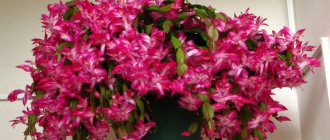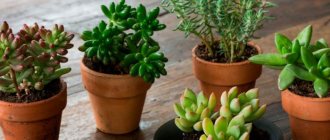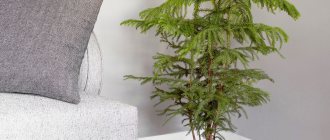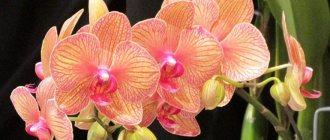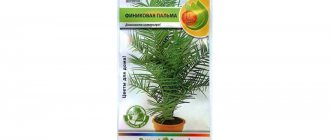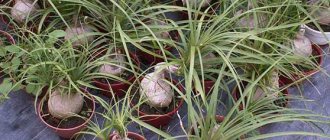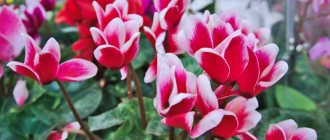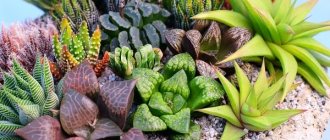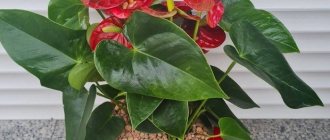Description
In nature, there are more than a dozen different species of date palms. It is mentioned as a culture back in the 4th century BC, which grew in the territory of present-day Iraq.
Biologically, the plant belongs to trees or shrubs and has one or two trunks. There are some species that have several trunks. They have spines at the base, strong and sharp. Small, yellow flowers, collected in paniculate inflorescences. The leaves are pinnate, long and narrow, pointed upward.
In nature, they live up to one and a half centuries and grow up to thirty meters in height. Many of the species produce fruits that are eaten - dates, which are rich in carbohydrates, vitamins and microelements. They are suitable for people, they are used to feed animals, and they are used to make sugar.
In the Ancient East, these fruits were considered bread because of their satiety and availability. To collect fruits from a tree, you need to climb to the very top, as they do not fall to the ground.
3.Varieties:
3.1.Phoenix roebelenii
A squat, feathery palm tree reaching a height of 5 m with a thick, powerful trunk covered with the remains of fallen leaves. At the tops of the trunks there is a lush, airy, green crown, formed by complex, dark green leaves ranging from 90 to 150 cm in length. The petioles of the leaves are curved and have sharp thorns at the base. The leaf segments are very narrow, glossy, entire, reaching a length of 30 - 40 cm. The inflorescence is a drooping branched panicle up to 30 cm long with small cream flowers. Male and female flowers are on different plants. As the female palms fade, they form edible fruits—dates.
↑ Up,
Types of palm trees to grow indoors
Even in the century before last, they practiced growing this plant like a flower. Not all types of palm trees are suitable for indoor use. Here are some of their varieties that can take root in a room.
- The common or palmate date is popular and fast-growing.
- The Robelena date is a low-growing species up to 2 m.
- Date Canary - about 2m.
- Curved date – up to 8 m, has several trunks
- Forest date - up to 12 m.
- Rocky date – up to 7 m.
- Ceylon date – up to 6 m.
All of them are very resistant to diseases and pests. The dates sold in stores are the fruits of the common date. It is grown industrially in the United Arab Emirates and Africa. From the seed of the fruit of this palm tree a flower can be obtained.
But you need to know that it has a two-meter height, branchy leaves and will take up a lot of space. Therefore, you need to immediately decide on the place where this future tree will be located.
Reproduction
All types of dates are easily propagated by seeds, which can be purchased in stores. A regular palmate date can be grown from a seed from a candied fruit purchased at the supermarket.
Preparing the seeds
Immediately after extraction from the fruit or after purchase, the seeds are soaked in warm (+35...+40 °C) water for 2-3 days. The water changes every day.
For planting, select the seeds that have sunk to the bottom of the container. Before this, the swollen seeds are washed with running water.
Soil preparation
Drainage holes are cut in disposable cups. A sterile soil mixture is mixed, consisting of leaf soil, perlite and vermiculite in equal proportions. This mixture is poured into cups (not to the brim!) and poured over.
Landing
In order for the date to germinate faster, it is necessary to slightly open the outer shell of the pit. Then deepen the seed vertically into the ground (one for each cup) and sprinkle another half centimeter.
Care
Cups with seedlings are placed in a warm (+20...+30 °C) place and watered from time to time, preventing them from drying out. Germination takes three to nine months.
As soon as the first shoots appear, it is necessary to provide them with bright, diffused lighting - but in no case should they be placed in direct sunlight.
Transplantation into a pot is carried out when the length of the sprout reaches 4 centimeters.
Landing
Buying seeds
There is no need to go to a specialized store to buy seeds; just go to the nearest grocery or vegetable store and buy date fruits, after checking the packaging date.
The fact is that old seeds may not sprout. Eat a few pieces, freeing the seeds from the pulp. Examine the appearance carefully. They must be undamaged and not eaten away by insects, as well as without signs of any disease or heat treatment.
When seeds are placed in water, healthy ones will sink to the bottom, and empty ones will rise to the surface.
Preparing for landing
Before planting, immerse the seeds in warm water for several days, which is changed once a day. For rapid root formation, growth stimulants (zircon, epin) can be added. You can use another soaking method.
Wrap the bone in a cotton swab moistened with water and place it in a small vessel until it swells. If necessary, re-wet the cotton wool.
Soil selection
Stores sell special soil for this crop, but universal soil is also suitable. You can also collect soil with your own hands in several ways.
Prepare a mixture of equal parts of sand, compost, and turf soil. Add superphosphate there (1 tbsp per 3 liters of soil).
A mixture of 2 parts turf flour, 1 part sand, 1 part peat and wood ash.
The finished soil must be disinfected by pouring boiling water on it or calcining it in the oven. You can also spill a solution of potassium permanganate.
Landing
When the roots are pecked, several seeds are planted in peat tablets. The first shoot will appear within six months. But if the seed is from a fresh fruit, it may appear after 20-25 days. We send the strongest shoot into the ground for further growth. Since the future plant has powerful roots, choose a deep vessel to provide drainage. When choosing a location, take into account that the palm tree does not tolerate the rays of the sun, drafts, or cold.
Caring for dates at home
The date is not a very fastidious plant, but a few simple conditions for caring for it at home must be observed.
Lighting
The palm tree loves bright rooms, but does not tolerate direct sunlight. To avoid leaf burns, it is necessary to provide shading. Covered balconies and loggias protected by curtains are good for growing dates.
Air temperature
The date is sensitive to temperatures, and if in summer it can withstand hot days, in winter it needs a cooler room - no higher than +18 ° C. Do not place the plant near radiators.
In the warm season, you can move the plant outside. But it should be borne in mind that at night the temperature should not drop below +12 °C.
Humidity
Since the palm tree comes from a tropical climate, it is accustomed to high air humidity. Therefore, the drier the air in the room and the higher the temperature, the more often the plant needs to be sprayed. In hot weather, large leaves can be carefully moistened with a wet cloth.
Watering
Palm trees do not tolerate stagnant water well, so a good layer of drainage is required at the bottom of the pot. For irrigation, settled water at room temperature is used, ideally rain or melt water.
The frequency depends on the time of year. In winter, dates require watering less often, and in summer - more often and more abundantly. At the same time, you need to monitor the condition of the soil, avoiding either waterlogging or drying out.
Top dressing
You can fertilize the soil every ten days in the summer and every month in the winter. To do this, 1 gram of potassium sulfur is added to a liter of water for irrigation.
Once a year, it is advisable to carefully remove the top layer of soil in the pot, replacing it with fresh soil mixed with superphosphate fertilizers.
Leaf trimming
It is necessary to promptly remove dried and broken leaves. It is not advisable to prune partially yellowed ones - they serve as a source of nutrients for the plant.
Transfer
A young date palm grows quickly and should be replanted at least once a year. For adult plants (over 5 years old), this procedure is required once every 3-5 years.
It is advisable to replant in the spring. It is strictly not recommended to choose autumn for this - the palm tree may die.
It has a hard time adapting to a new place, so it should be replanted in accordance with the step-by-step instructions:
- The new pot should be much deeper than the previous one, because the roots of the palm tree grow deeper than wide. Good drainage holes are a must.
- Place drainage at the bottom of the pot - for example, expanded clay.
- You can use ready-made store-bought soil or mix turf soil, sand and humus yourself in equal proportions, be sure to add 1 tablespoon of superphosphate fertilizers per 3 liters of soil.
- Under no circumstances should the earthen ball around the roots be damaged. Only the top layer of the former soil needs to be cleared off. If the pot does not allow you to remove the palm tree along with the soil, it should be broken or cut.
- The plant trunk does not need to be buried in a new pot. The ground level should remain the same as in the old place.
Development
There will be no need to observe the Date Palm as such for several years. It only produces single, narrow, sharp leaves. Spreading leaves appear only at 3-5 years. And all the beauty can be observed only at 5-7 years of growth.
If you want to quickly get an adult plant, you can use the vegetative propagation method by tearing off the basal shoot or side shoulder strap at the base of the trunk.
Photo gallery
Each female flower has 3 pistils and 6 staminodes. But only on one of the pistils at the time of flowering does an ovary form, which later develops into a fruit.
To get an idea of what a date palm looks like, look at the selection of photos in the gallery and appreciate the greatness of this tropical queen:
Lighting
At the beginning of growth, place the date palm flower on the sunny side, but so as not to burn the leaves. This culture came to us from hot countries, so for further cultivation you need to choose a spacious, well-lit room with high ceilings.
In nature, the date palm grows in direct sunlight. In indoor conditions, the plant does not like direct rays, preferring a little shade on hot summer days. To ensure that the palm does not turn out to be one-sided, it is necessary to occasionally rotate the pot around its axis.
In winter, arrange additional lighting using a fluorescent lamp or LED.
Photo gallery
You can notice that the leaves of the plant are typical pinnate, curved like an arch. Their length is just over half a meter. They consist of a large number of soft and narrow leaf-shaped segments, 12-20 cm in length, located very densely. The foliage color is green, rich and dark. Young leaves have a powdery coating, as well as whitish fibers. The inflorescences have a low degree of branching. The fruits are colored black.
You can watch the video about how date palms are born, grow, bloom and bear fruit:
Temperature
The temperature for care in room conditions should be 23-25°C. In hot weather, the plant tolerates 30°C, but the leaves must be sprayed with water to prevent them from drying out. In winter it behaves well at 18°C. Make sure that the temperature is not lower than 14°C.
Take it out of a sheltered place into fresh air or a loggia, gradually hardening it at a temperature of up to 12°C. Start with one hour, increasing the time period each time.
Fertilizer
From April to September, the date palm should be fed once every 2 weeks, in winter - once a month, or stop feeding altogether. For this purpose, special fertilizers for palm trees or complex fertilizers for decorative deciduous plants are suitable.
Dates respond well to fertilization with potassium nitrate. To prepare the fertilizer, dissolve a level teaspoon of saltpeter in a liter of water.
With a lack of nutrients in the soil, the decorative qualities of the date palm decrease and it begins to grow more slowly. Timely feeding will help correct the situation.
It is important to apply fertilizers only in diluted form and into moist soil (after watering) . Otherwise, there is a risk of burning the roots of the flower.
Sometimes it is recommended to alternate mineral fertilizers with organic ones. As the latter, you can use bird droppings, for example, granular or its infusion.
Watering
In nature, this tree grows with minimal rainfall. Therefore, the roots penetrate very deeply to search for moisture. How to water an indoor flower? This must be done so that the soil moisture is normal.
Make sure that the soil does not dry out, but is not over-moistened. Water for irrigation must be taken either from rainwater or from centralized water. In hot weather, shower. Winter watering should be much less frequent than summer watering.
Top dressing
Flower shops sell special fertilizers for palm trees, but you can also buy preparations for ordinary plants with a high nitrogen content to form lush green mass. Fertilizing is done into the spilled soil according to the instructions.
Like any other indoor plant, it is better to under-fertilize a palm tree than to over-fertilize it. Compost, humus, and ash will also help the normal development of the tree.
Trimming
During the first years, pruning is strictly prohibited. When the tree is old enough, you can trim off the side shoots that are dry or of poor quality, but not the top, which is the growing point.
Pests
If the leaves turn pale, curl, or begin to fall off, this may be due to pests. The palm tree is most often attacked by:
- nematode;
- mealyworm;
- spider mite;
- California flower thrips;
- scale insect
To combat insects, they use both store-bought preparations and all kinds of solutions and infusions prepared with their own hands. If you have a nematode infection, no drugs or remedies will help. The plant must be completely destroyed.
Diseases
With proper care, a palm tree rarely gets sick, but if the leaves turn yellow, begin to dry out, turn brown, or become covered with spots, then there is reason to assume that the plant is sick:
- if the tips of the leaves are dry, there is a lack of moisture;
- if the upper part dies, stop watering and check the roots for diseases;
- if the leaves turn yellow, a fungal disease is possible;
- if the side shoots dry out, this is normal for an old tree.
It should be noted that this crop does not like watering with chilled water. And against diseases, use fungicides, add ash to the ground, and spill it with a solution of potassium permanganate.
When grown indoors, this indoor plant is unlikely to produce fruits, and this is not so important, because the date palm is grown not for harvest, but to decorate the interior and add some exoticism.
Possible problems
Possible problems that arise when growing palm trees include:
- growth cessation depends on the temperature of the soil. At a temperature of +16...+17°C, the root growth of the plant slows down;
- edge burn of leaves - burnt edges of leaves are difficult not to notice, which is a signal for a complete or partial change of soil;
- Magnesium deficiency - the first signs are visible on old leaves. With this problem, wide yellow stripes form on them along the edge of the plate. The middle of the leaf is green;
- copper toxicity - ellipse-shaped spots on the leaf blade that resemble signs of fungal spot (a disease of palm leaves). In such a situation, it is necessary to avoid the use of drugs containing copper.
